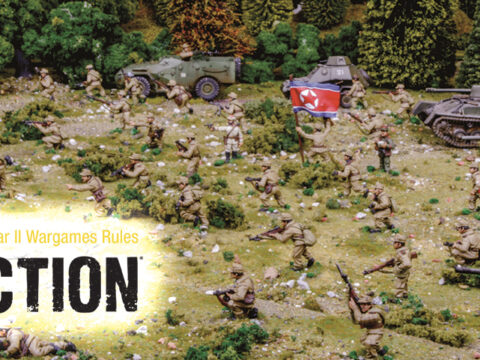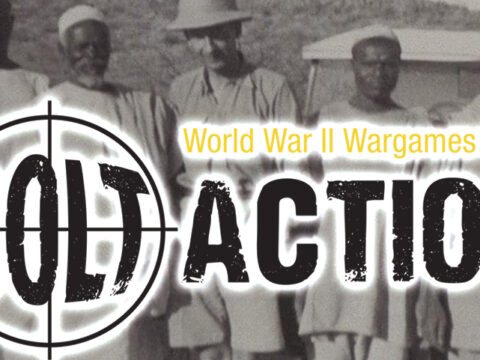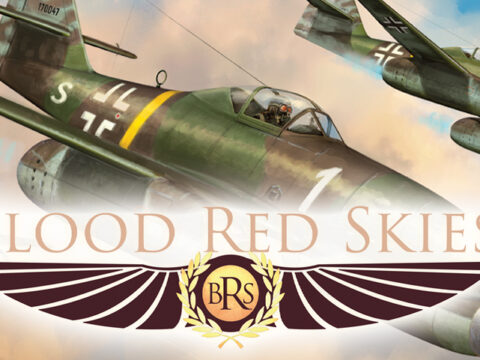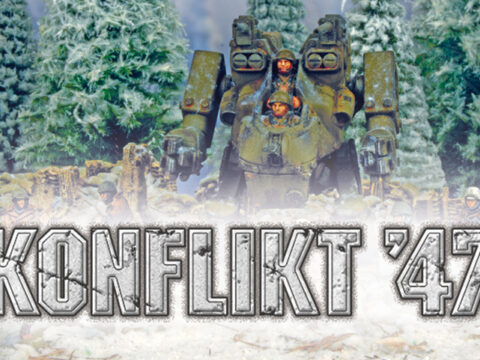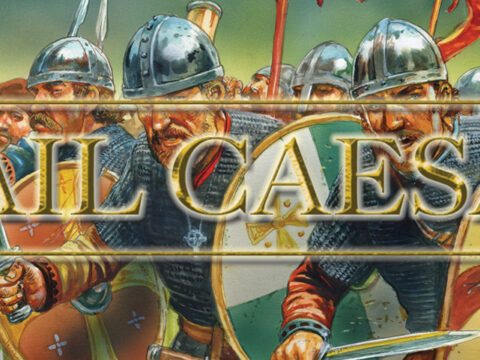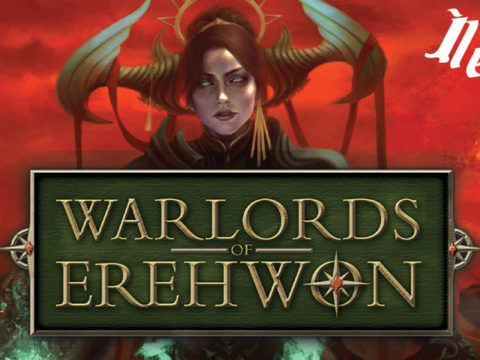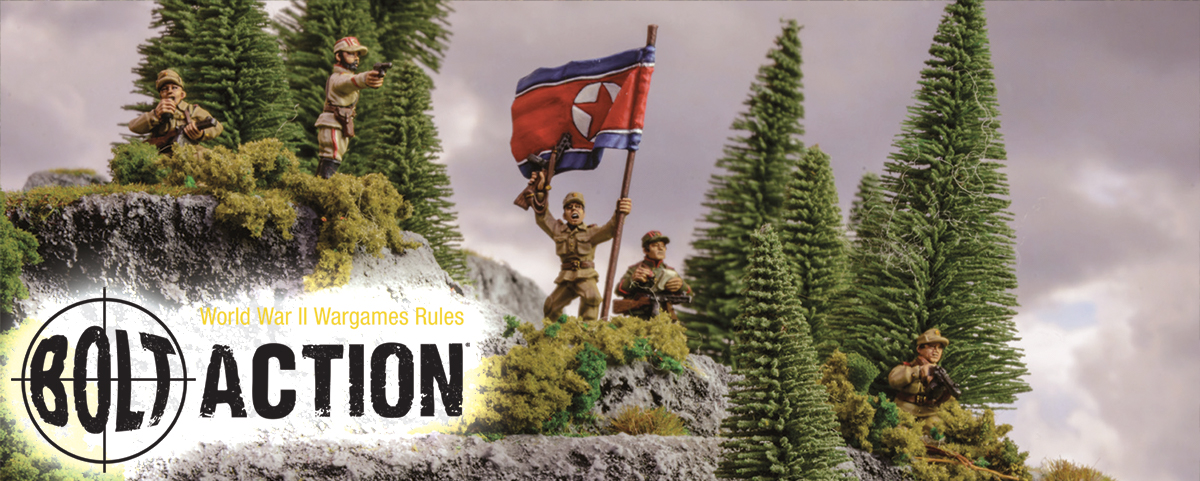
Co-author of Bolt Action Korea, Jon Russell, provides new experimental rules for use in your games of Bolt Action Korea. Please bear in mind that these rules are experimental and untested. If you use any of them, we’d love to know what you think!
New Unit
Flamethrower Tank
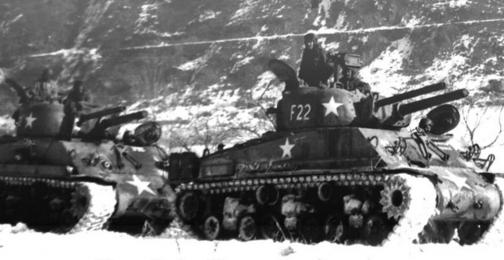 This mobile fire breathing monsters were widely used in World War II, especially in the Pacific Theater. These beasts were used singly or in pairs but in the Korean Conflict the USMC would organize them into a Flame Platoon, a brand new concept consisting of only flame tanks. The M4A3E8 were the most used in this conflict and were fitted with a 105mm AND a napalm-throwing gun giving the nickname “Double Barrel Shotguns”. The platoon was first deployed during the Inchon landings and was used for the rest of the conflict. At the end of the war the unit had racked up One Navy Cross, five Silver Stars, three presidential unit citation and twelve purple hearts.
This mobile fire breathing monsters were widely used in World War II, especially in the Pacific Theater. These beasts were used singly or in pairs but in the Korean Conflict the USMC would organize them into a Flame Platoon, a brand new concept consisting of only flame tanks. The M4A3E8 were the most used in this conflict and were fitted with a 105mm AND a napalm-throwing gun giving the nickname “Double Barrel Shotguns”. The platoon was first deployed during the Inchon landings and was used for the rest of the conflict. At the end of the war the unit had racked up One Navy Cross, five Silver Stars, three presidential unit citation and twelve purple hearts.
For Game purposes, you can modify the entry on PAGE 133 in Bolt Action Korea:
M4A3/A4 SHERMAN 105MM HOWITZER
The 105mm M4 was produced in multiple versions with different combinations of engine in the same way as the basic tank. Useful in the heavy fighting in the later stages of WWII, a few of these found their way to the battlefield of Korea. Because of their relatively heavy armour compared to most self-propelled artillery, the 105mm M4 tanks could be used in a close support role, leaving the more vulnerable M7 and M12 self-propelled guns towards the rear. In an appropriate infantry supporting role this tank was an excellent choice to remove heavily entrenched defenders.
The experimental Flamethrower variant is suitable for Armies from September 1950 onwards.
Cost: 255 pts (Regular), 304pts (Veteran)
Weapons: One gyro-stabilised turret-mounted medium howitzer, one turret mounted Flame gun with co-axial MMG and forward-facing hull-mounted MMG
Damage Value: 9+ (medium tank)
Options: – May add a pintle-mounted MMG on the turret for +15pts
– May upgrade the pintle-mounted MMG to a pintle-mounted HMG for +10pts
Special Rule: Because of the internally stored volatile mixture it suffers the +1 damage roll mentioned on page 68 of the Bolt Action II rulebook.
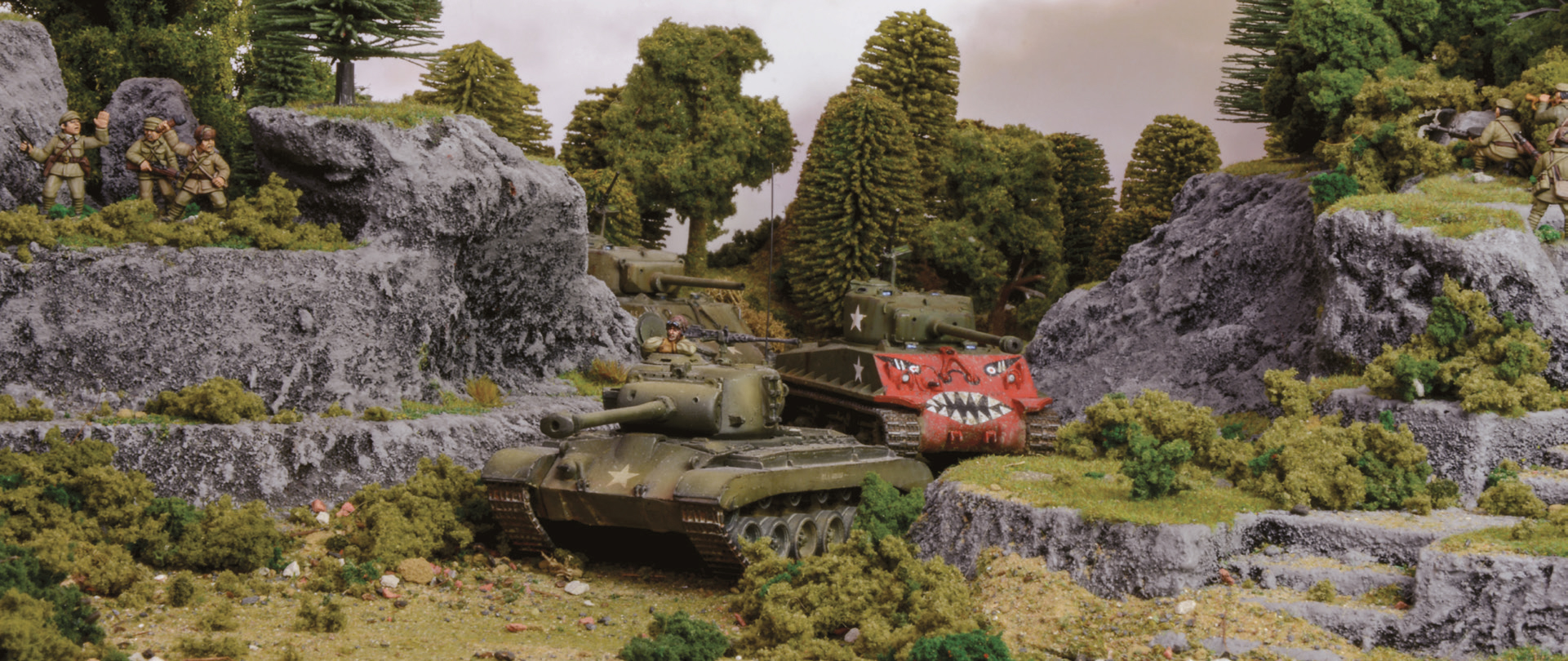
New Equipment
Night Fighting
The M3 Infrared scope was fitted onto the M3 Carbine and used for night-fighting. These consisted of a riflescope that allowed the soldier to see in the infrared spectrum, topped by a small IR searchlight powered by a battery that the soldier was carrying in a pack on his shoulders. These scopes available in usable quantities but because of the weight and fragile nature of the device were not used in large quantities.
They are available to any UN infantry squads after July 1952. Add up to 3 additional men with the M3 scope at +20 pts each. These scopes confer a +15” modifier to the spotting rolls of the models firing them.
Illumination
After Feb 1951 the UN Forces were working very hard to combat the night fighting tactics of the Communist forces. The first solution was Artillery shells fired from a variety of weapons. Any Medium to Large Mortar or Howitzer units can fire illumination rounds with the following effects. Firing is as mentioned in the rulebook and the blast template now instead of affecting units with HE damage this area will be illuminated and all night effects are removed from this area for D3 turns. Because of the limited quantity of these rounds after firing roll a D6. On a 1 to 3, there are more rounds available, but on a 4 to 6 there are no more rounds available.
From Dec 1951 on the UN, forces had worked hard on a way to take the night from the Communist forces. By this time illumination rounds were in sufficient quantities and methods to use them had been perfected. Any UN FOAs can call in Lightning Bug Missions with the following results. When the mission comes in as per the rules on page 85 to 86 of the main rulebook, roll 4D6 for the area of effect. This area is now treated as if it is a daytime mission for D3+2 turns.
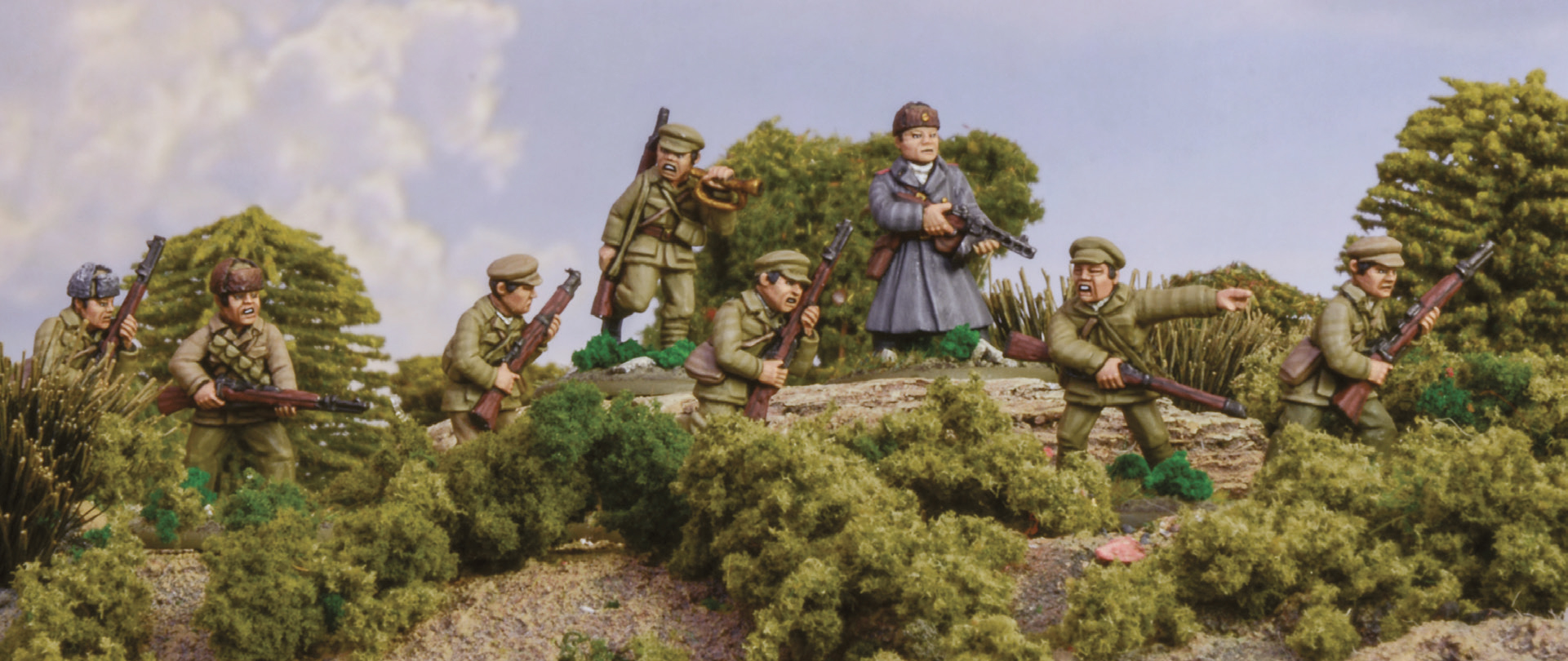
New Rules
Using the M26 Patton for indirect fire
There are multiple photos of these tanks driven up on embankments and used in a direct fire role. This was a risky and potentially hazardous use of the vehicle. If you chose to do this use the following experimental rule. First up display your M46 elevated in some way, either with a block or a very cool fabricated base. Declare you are using this tank as a Medium Howitzer and roll to hit. If you roll a one then not only is it a miss you must roll to see if the turret ring has been damaged or at worst the whole turret has been dislodged out of alignment. Roll another D6, on a 1-3 the turret ring is affected and is jammed (see page 109 in the main rulebook) for the rest of the game. On a 4-6 the turret has been affected by the blast and the vehicle is now considered knocked out for game purposes.
Bugles
The Chinese made extensive use of bugles, small snare type drums, horns, rattles, and other musical instruments as a means of communication during offensive and defensive operations. Initially, this was incredibly disturbing to UN forces hearing all these odd noises at night on the battlefield. Oddly, the Chinese were not using these instruments in a psychological warfare role, but they had an impact on soldiers just the same. In the early part of October and through to March, the Chinese held this advantage until the UN forces understood that these were a means of communication.
In scenarios set before June 1951, you can represent this by giving a -1 Morale penalty to any enemy infantry or artillery unit that is within 18” of a Chinese model that is carrying a musical instrument. From June 1951, the musical instruments have no effect.
Be sure to let us know if you use any of these experimental rules. Let us know what you think by e-mailing info@warlordgames.com
Bolt Action Korea
You can use these experimental rules, in conjunction with the Bolt Action Korea supplement to greatly expand your Bolt Action experience.
Inside the book, you’ll find a comprehensive history of the conflict with details of every major battle fought between the two sides. It also includes details of the various forces and their organisation, commanders, and equipment. Scenarios are provided for many of the battles, along with comprehensive force selectors to help you assemble your force.
A copy of the Bolt Action 2nd Edition rules is needed to use this supplement.
Don’t forget, if you order direct from Warlord Games webstore, you’ll get a FREE exclusive miniature – Frozen Chosin.


